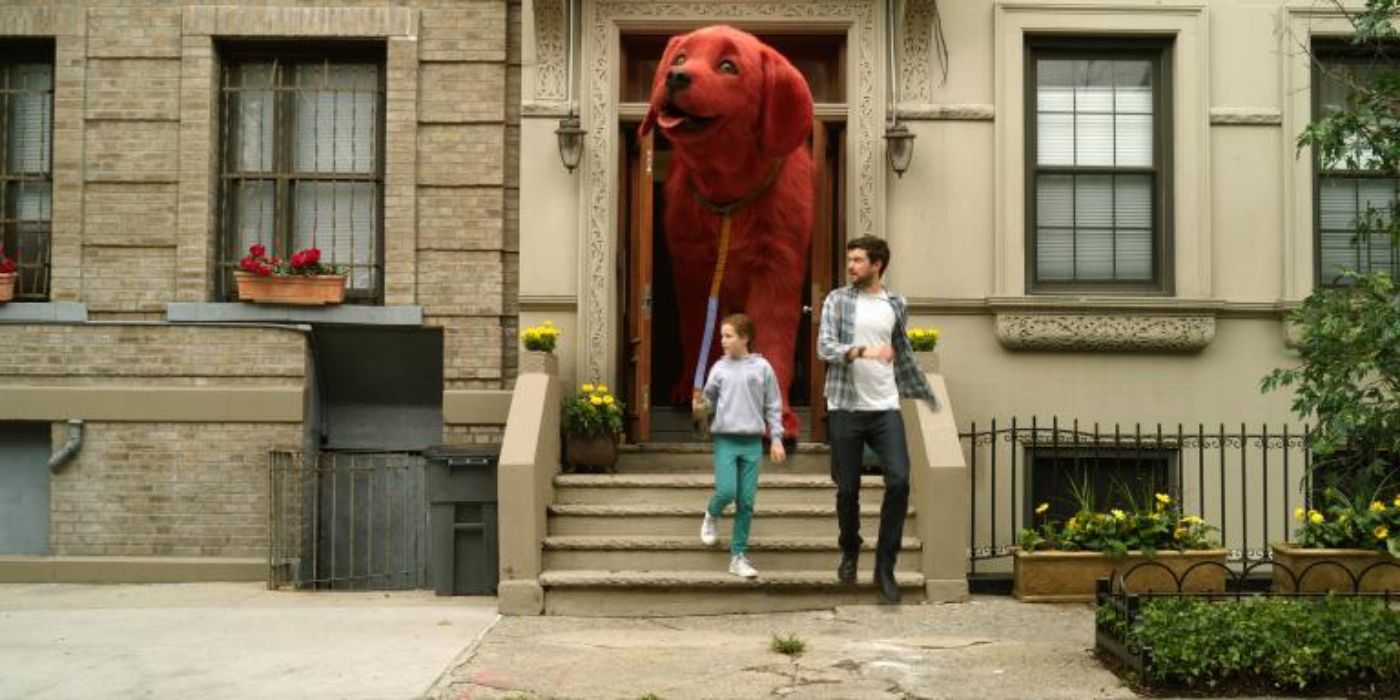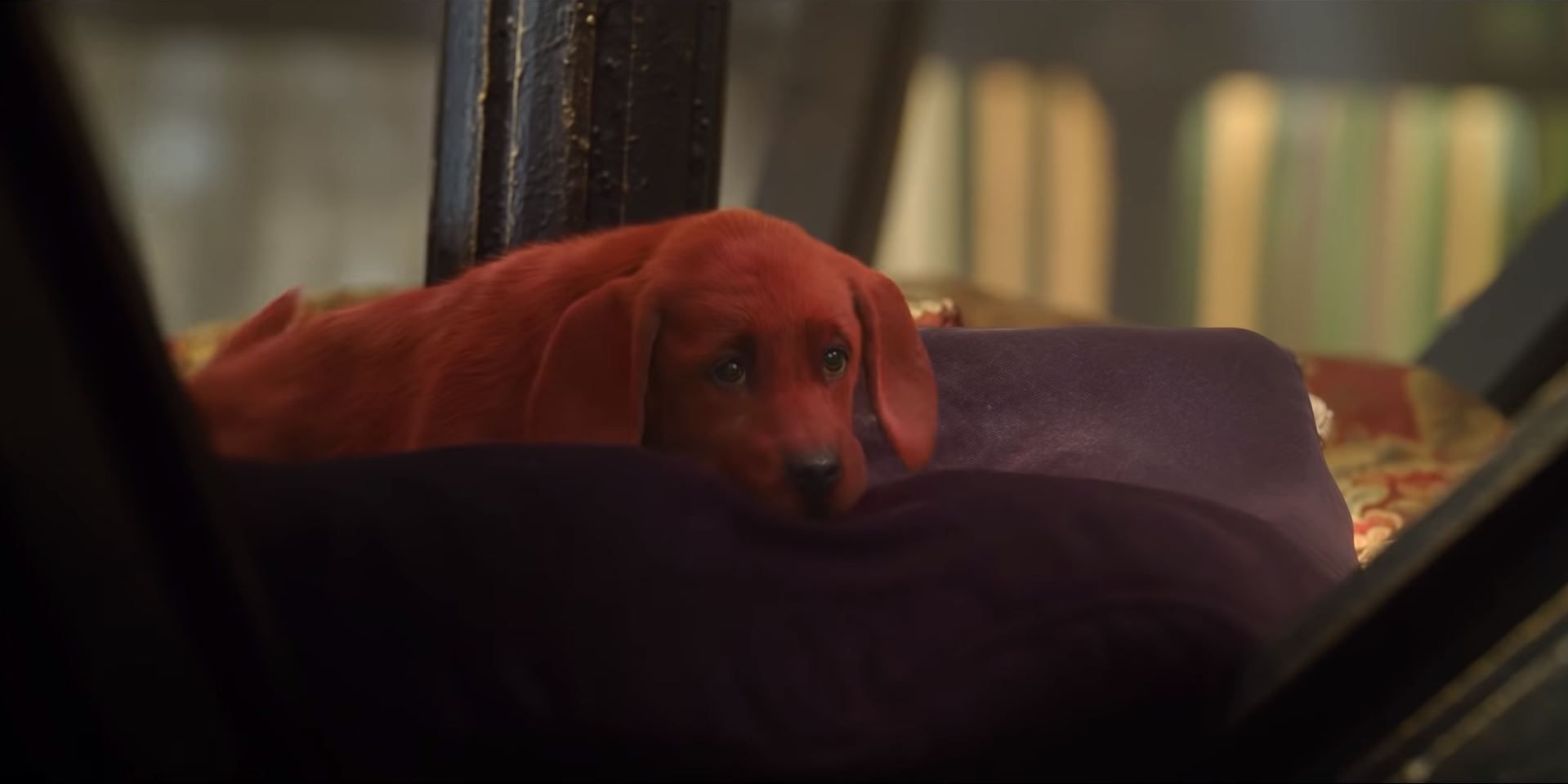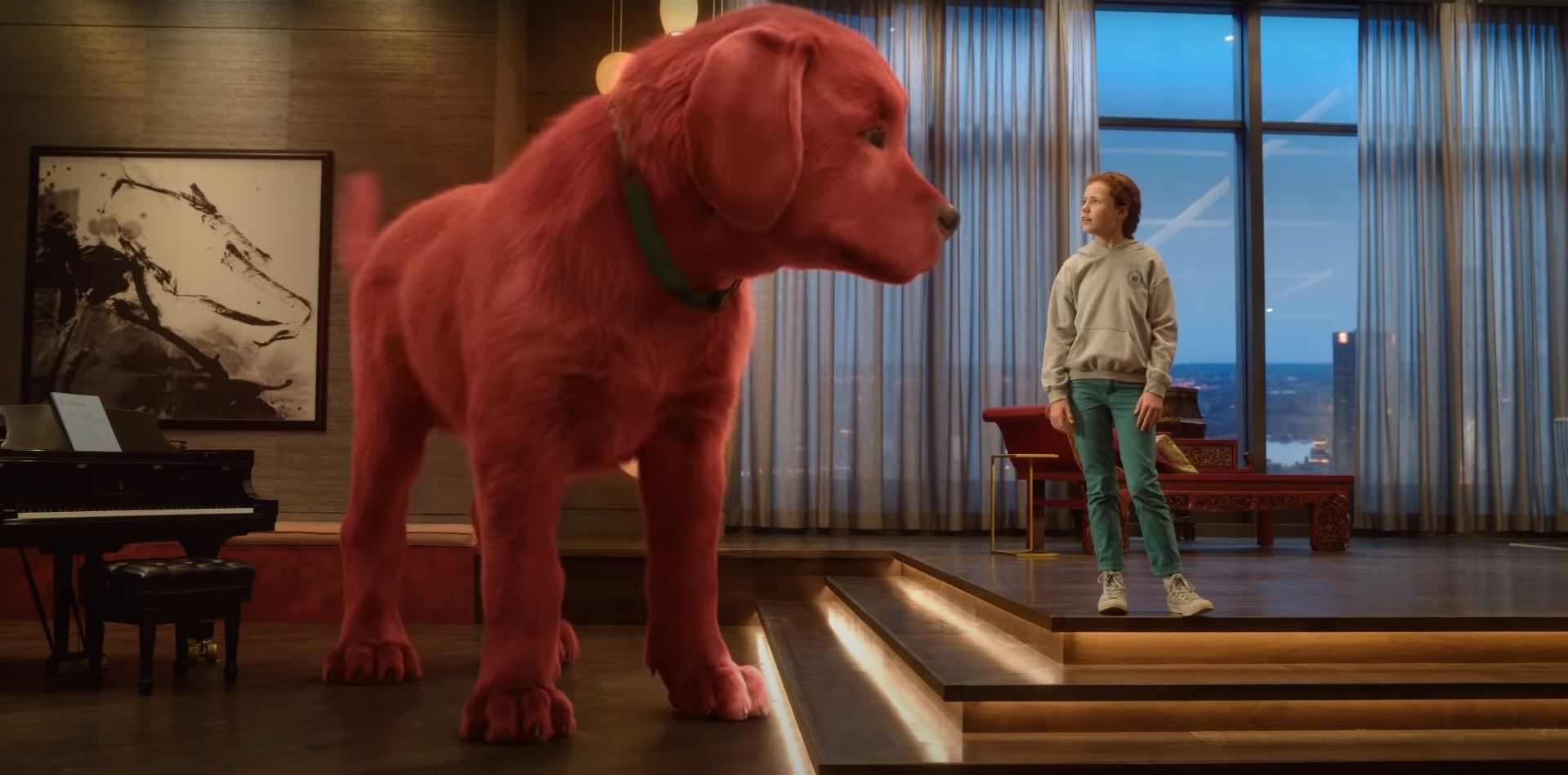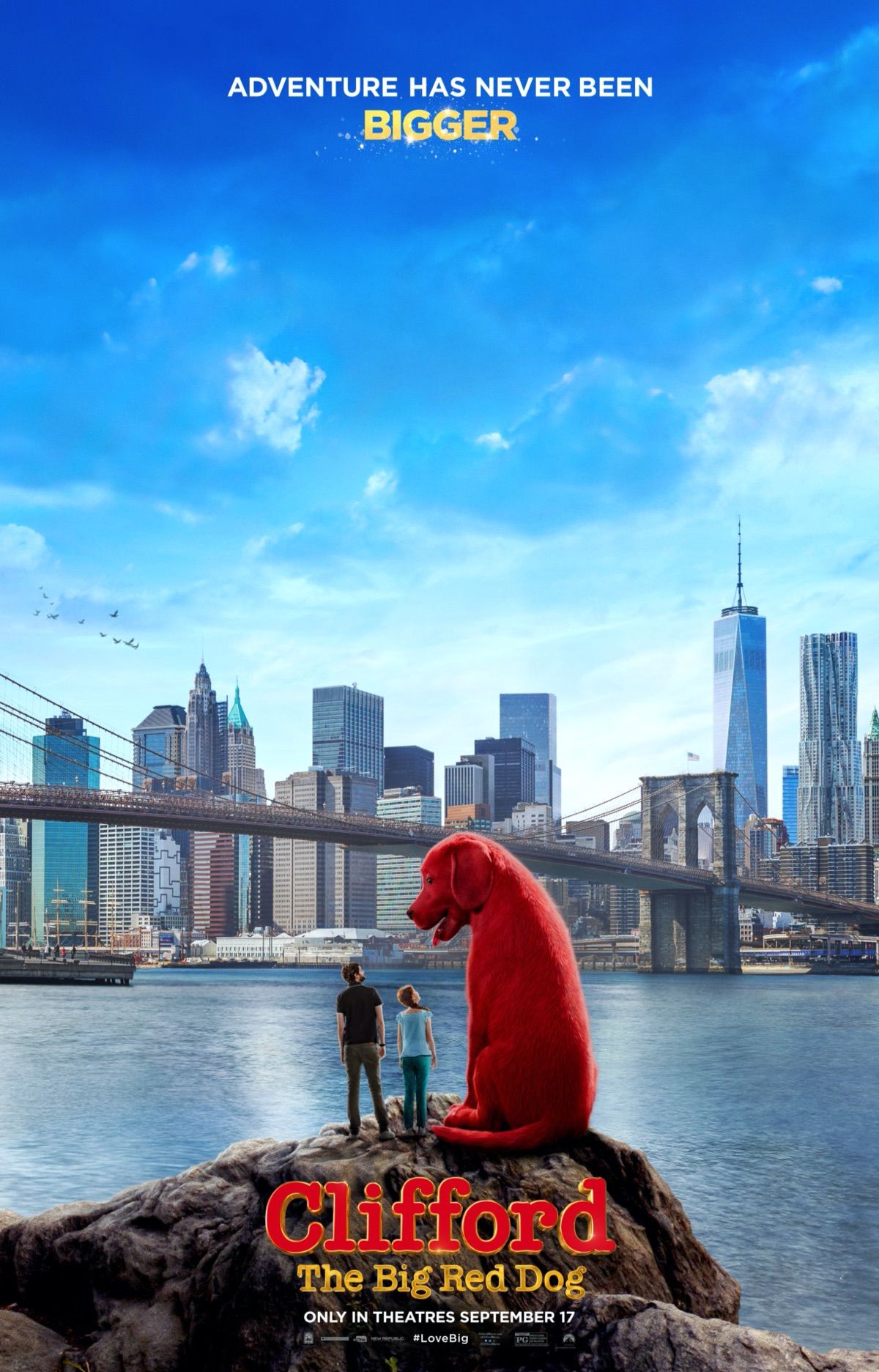Based on the stories by Norman Bridwell, the live-action/computer-animated family adventure comedy film Clifford the Big Red Dog follows middle schooler Emily Elizabeth (Darby Camp), who discovers a small red puppy and sets her sights on making the dog her new best friend, but as her love for Clifford grows, so does his size. When her little puppy quickly outgrows their New York City apartment, the 10-foot tall dog begins to attract the attention of everyone in the Big Apple.
With a new teaser trailer giving a glimpse into what to expect from the upcoming film, due out in theaters on September 17th, Collider got the opportunity to chat with director Walt Becker and producer Jordan Kerner about what makes Clifford’s story universal, the challenges with pulling off the proper scale for a gigantic dog, their extensive conversations about finding the right shade of red, what they had on set for the film’s young star Darby Camp to interact with, assembling a very funny cast of actors, and whether they’re looking to set up more Clifford films in the future.
Collider: The story of Clifford was first published in the 1960s. What do you think it is about Clifford that keeps his story alive and that makes him universal for any age, at any time?
JORDAN KERNER: I have three daughters, so upon first reading it to them and then reading it later, he is the obvious – he’s big and he’s red. Norman Bridwell, the illustrator and writer, created two sets of books. One is he’s an adult and he would change from eight feet tall to 35 feet, depending upon the book you were reading. We had to make him a certain height, which would be in between those numbers at 10 feet because he couldn’t get into a house or anywhere else and have scenes. He would always be with his head in the window or something, which would feel gimmicky after a while. So, when you read that book, you imagine having a dog – your dog – who would be the same size and could be bright red. That’s an enduring element. I also think that Clifford, as a character, was truly all about love. He was about acceptance because he was a big dog. You didn’t see it in the book, where people were scared of him as a big dog. They just always loved him. In the movie, we play that a little differently. We play where there are some people who just adore him and wanna take pictures with them and wanna see him, and there are others who are like, “Whoa, wait a second, how does this happen? Is this dog a freak?” Those people, during the course of the movie, have to come along with who he is and grow, as a result of seeing the movie. Things that are big and red don’t have to be scary. They can also be the things that we imagined from our childhood. I think that’s really why. It was the impishness and the sweetness of Norman Bridwell’s writing, and the size and color of the character for me.
Walt, what was it that reeled you in on this? Was it because you went small with Alvin and the Chipmunks that you wanted to go gigantic and do Clifford?
WALT BECKER: It’s funny, it’s the exact opposite issues of scale. With Alvin and the Chipmunks, you’re dealing with characters that are 11 inches and you’re shooting them in a scene with a six-foot adult and it’s literally Attack of the 50 Foot Woman. Clifford was the opposite, where he was the larger character than humans, who are smaller. For me, I just love dogs, in general. I just think the ability to communicate with your own dog is so universal. Even if they don’t talk to you, you know what they’re understanding and feeling. One of my favorite movies growing up was E.T. I just loved how that story took a magical, special creature that came into the life of the young protagonist, and they both were learning from each other. They have the ability to kind of communicate, but not really talk. For me, what attracted me to the character, besides it being a dog, was that it’s something that I’d read my kids and was my first. It seems like it’s everybody’s first book. It was just this incredible family adventure movie with a slightly magical creature affecting everybody in a real world city, like New York. That’s probably what attracted me to it.
How did you approach the look for Clifford, figuring out exactly how the sizing would look, in relation to his surroundings and all of the other people, and the color of Clifford? Were there lots of conversations just about specific shades of red to use?
BECKER: No one should know as many shades of red that exist, as Jordan and I. Because this was a live-action movie with a CG character, the thought of making him look cartoony felt like we would be doing a disservice to the actual storytelling in a live-action format. So, very early on, Jordan and I both agreed that the way to do it is to create a dog that looked real and that was magical and grew 10 feet tall, and still felt like a real dog, but he also had to be red. Everybody has seen the big red dog in 2D hand-drawn animation on the page. We were really opening up an entirely new universe and having to educate people about a big, red, photoreal 10-foot tall do. So, it was threading a needle on what red looks best on a real dog. On a cartoon, red can look a gazillion different ways, and I don’t have a real dog, it’s hard to find that perfect balance where it looks real enough and red enough where you’re paying the proper homage to the character from the book and proper homage to the filmic world and this new universe that you’re trying to build with that character.
KERNER: For him to be real and not just red, and to get that right, along with his groom and his physicality, we went to a company called MPC. MPC had worked a couple of years before on the photoreal The Lion King, and we learned a lot from looking at their models. And we had to help train their animators because even though Simba was a sweet character, he didn’t have the awkwardness and the sweetness of a puppy. Walt worked very carefully with the animators, which are like actors, to get a performance where you got that puppy sweetness and the reality that looks like you could reach into the screen and touch him. That was key to us. With the color red, we know so many different versions of it, but one of the things we had to tackle, if you’ve ever watched a movie on home video, which I’m sure you’ve watched a gazillion, is that if the credits are in red, they bleed. That was a huge technical challenge because red, for some reason in the optical scale, disperses and can change shade and get a little more blue or yellow. So, we had to solve the technological problem at the same time that we were making the creative decision, as to the balance between the color in the book and the color of the dog in reality.
You have a young girl at the center of your story, so what was your process of working with Darby Camp on properly conveying the size of Clifford? Without having a real gigantic dog there on set, what was the collaboration like with her and how did you figure out getting the performance you needed from her, as Emily Elizabeth?
BECKER: That’s a great question. She’s an amazing young actor, so that helped. We were already ahead of the curve on that. And then, in terms of trying to represent what Clifford looked like, it was a little easier on Alvin because we basically had a little 11-inch stuffy that the actors could act with. But the idea was, how are we gonna physically represent something so big in a bedroom and help train Darby for where his head and tail are at? I remembered seeing the play War Horse in New York, where that horse looked so amazing. It was puppeted by two people and I was amazed at how well that articulated. And then, I talked to Jordan about the puppet, which we started calling the Chinese dragon. Even in the most simple form, a guy controlling the head and tail could probably give us enough of what we need to represent the dog. And so, we ended up hiring two incredible puppeteers, one of whom could articulate the head and open the mouth, and the other guy was the tail. They got so good at dog behavior. I’ve gotta say, they were pretty amazing. It represented a 10-foot dog and what that would look like in a room. That’s how we solved it for her eyeline and for her acting with something that big in her bedroom. That helped a lot, I think.
KERNER: I totally agree.
Was it more challenging to have Clifford interact with humans, or was it more challenging to have him interact with normal size dogs?
BECKER: Interesting. In our movie, what was nice was that we did the origin tale. In a lot of the book series, Clifford is a little puppy, and then he gets big. So, he starts off as a runt of the litter type of puppy, and then through a bit of magic and a whole lot of love, he ends up becoming this magical, 10-foot dog. We were shooting in Central Park once, and to see real dogs interact with that puppet, they literally thought he was just a giant dog. I wish we had B-roll of that. It would be interesting to see. They would go around, trying to sniff him and looking at him, and the animators animated the dog. It was pretty spectacular to see.
KERNER: It was very funny.
With something like this, obviously there’s inherent humor in a giant dog because that’s something we don’t get to see existing in the regular world, but looking at this cast list, it seems like there’s also some really funny people in this movie. What are the guidelines that you went by, in finding the level of humor that you wanted for this film?
BECKER: I’m glad you pointed out the cast. Jordan and I both thought, “Hey, let’s make a movie for adults that’s appropriate for kids, and that kids will like,” so the story really is very four-quadrant. With casting, even if someone comes in just for a day and you have your lead actors, you can’t have a good tennis game, if you don’t have good players. For us, it was always about, how can we enhance the comedy? How can we bring light to a smaller character, a one day character, or a walk-on character. Being in New York, we had access to Saturday Night Live, and Jordan, because of The Mighty Ducks, is friends with Kenan Thompson, so we got him. Tony Hale, I worked with on Alvin and he was just such a great baddie. And then, there was the great John Cleese and David Alan Grier. It really became a melting pot of all these different comedic heroes that I grew up with and that Jordan had worked with and we tried to infuse the movie with, so that there’s also interesting adult characters, along with the animated character.
KERNER: Yeah, absolutely. With Kenan and The Mighty Ducks, that was a movie that took a sport that was predominantly white and male and it made it male and female, with every race and every religion, but never said it. In this movie, think about the world that was around us in 2019, as we shot it and as we finished it, up until two months ago. He is big and he is red, and there are gonna be people who are afraid of him because of that, there are gonna be people that embrace him because he’s different, and there are gonna be people who love him and see him as the sweet, pure puppy that he is. But by the end, those who doubted, those who feared, and those who saw him as something different are gonna come around to understand that he is who he is. That’s what’s so important for me, in this part the process. We wanna take people on an adult journey that’s real and about something, but it’s not something we say, it’s in the DNA of the movie.
With as familiar as people are with Clifford and the audience that you’re going for with a movie like this, are you setting up this film in the hopes that we’ll get more Clifford movies in the future? Are you hoping that you’ll get to do more films?
KERNER: The implication is that it’s a commercial decision. The reality is that it’s a story decision. There are some movies that are one movie and we’re done, and there are other movies that are more. I’ve worked a lot in television and motion pictures, and I have a tendency of looking at most stories like a motion picture with a three-act structure. But then, there’s a bigger three-act structure, and that’s over three movies, so a trilogy. With Clifford, making the decision for the first movie, as Norman Bridwell did for a series of books, we kept him a puppy. That allows us, if we want to, to do more films. You’re gonna see in the movie that Clifford is born in a warehouse with brothers and sisters, and you’re gonna see his mother. The question is, what happened to them? The question is, what happened to his father? There are gonna be a lot of elements of story that are open for us. For me, if we love the character and we feel that we’ve done the right job in storytelling and honored, in this case Norman Bridwell, we would like to see this continue over three films, hopefully, that will tell a much bigger story of Clifford. As Walt said, this is the origin story. For the first 20% of the movie, Darby is working with a little stuffy, so the eyeline was very easy. It’s when he gets larger and we had the Chinese dragon, it was incredible to see the emotion that the puppeteers could convey. There were lots of times on the set where I would have a tear running down my face and Walt would look at me and shake his head. I was deeply affected by certain moments with Clifford, as were a lot of members of the crew. So, yes, it is something we think about. It’s usually one [movie] or three [movies], in my mind, and this felt like three because we were gonna start with him as a puppy.
Clifford the Big Red Dog is out in theaters on September 17th.




